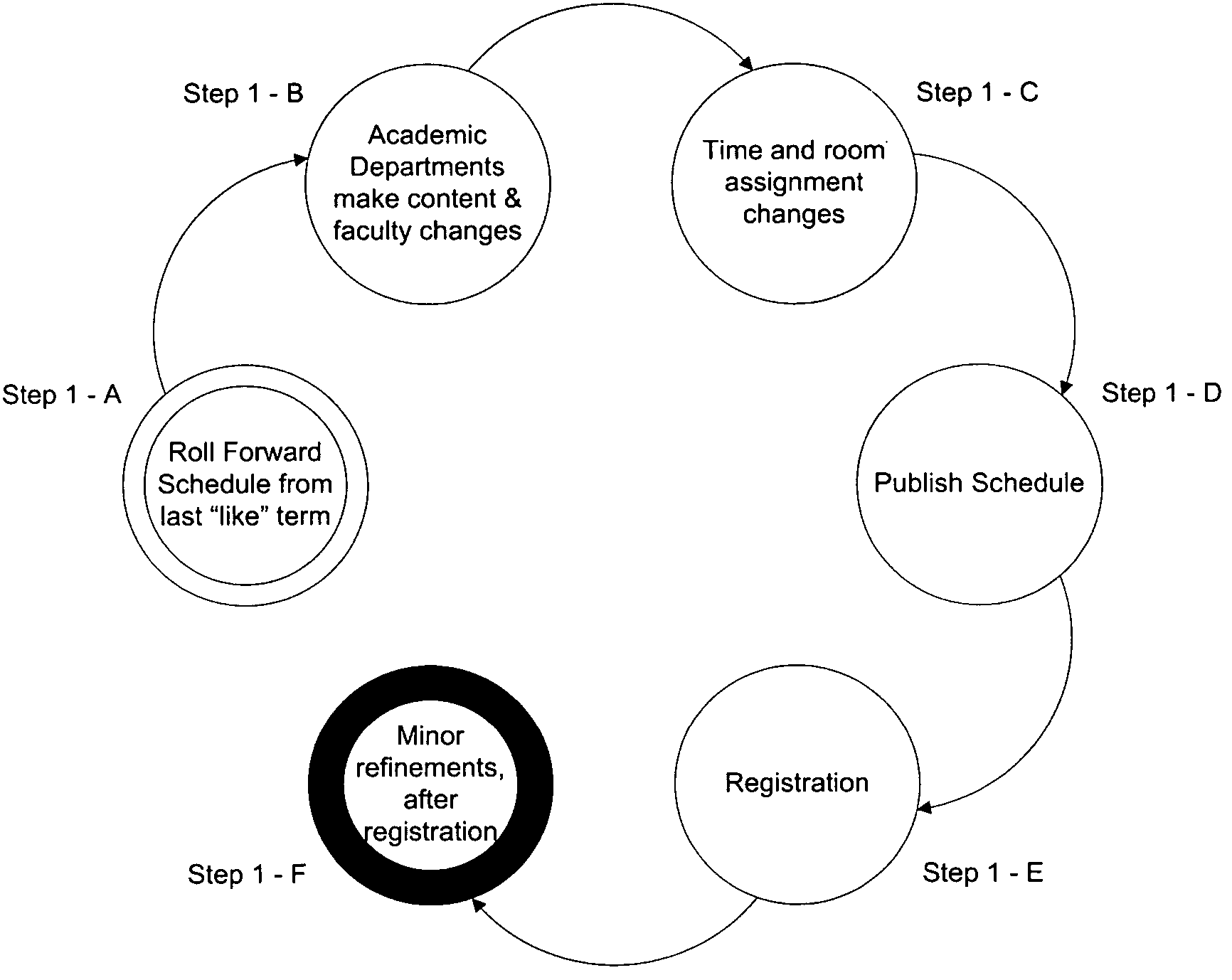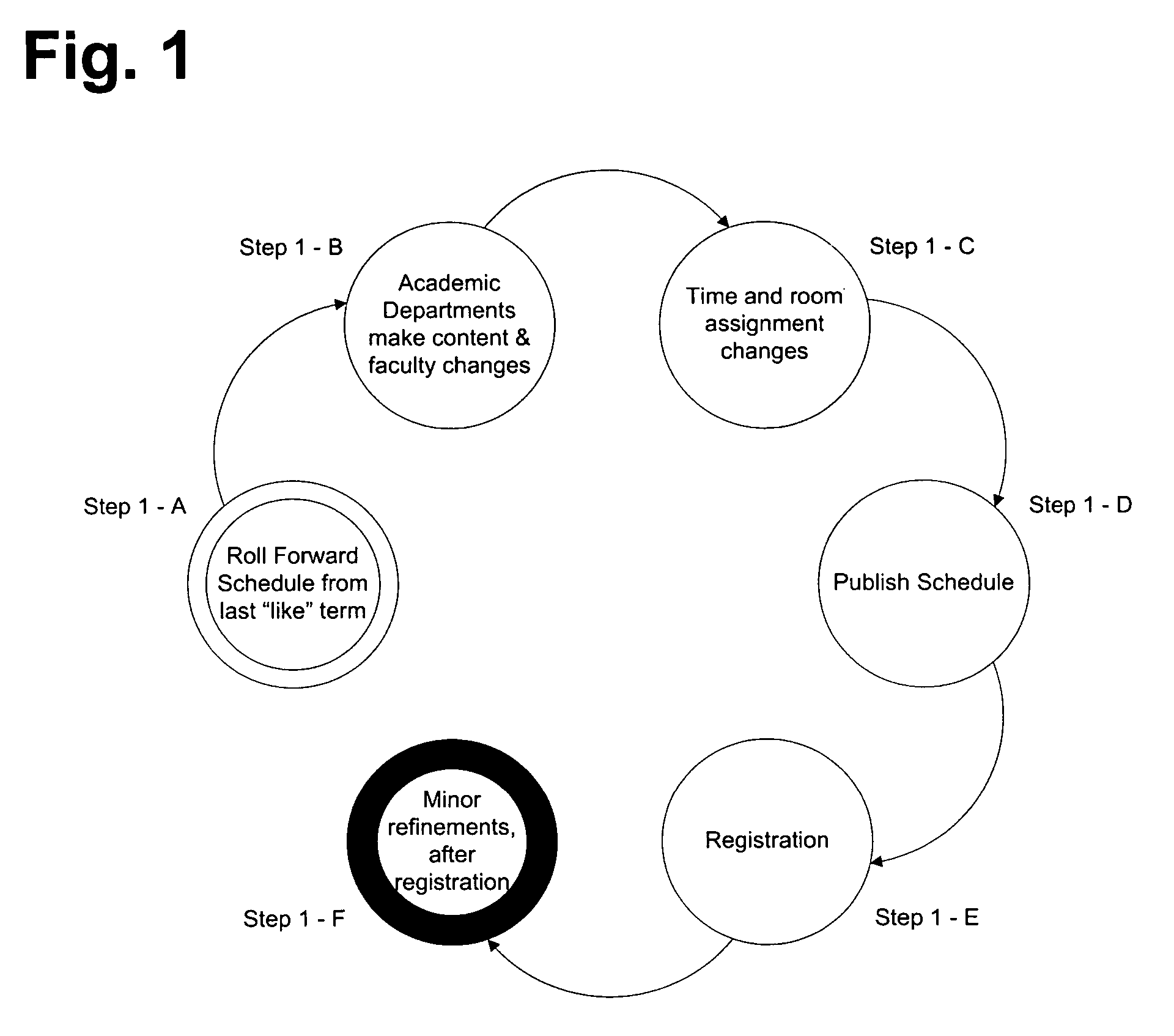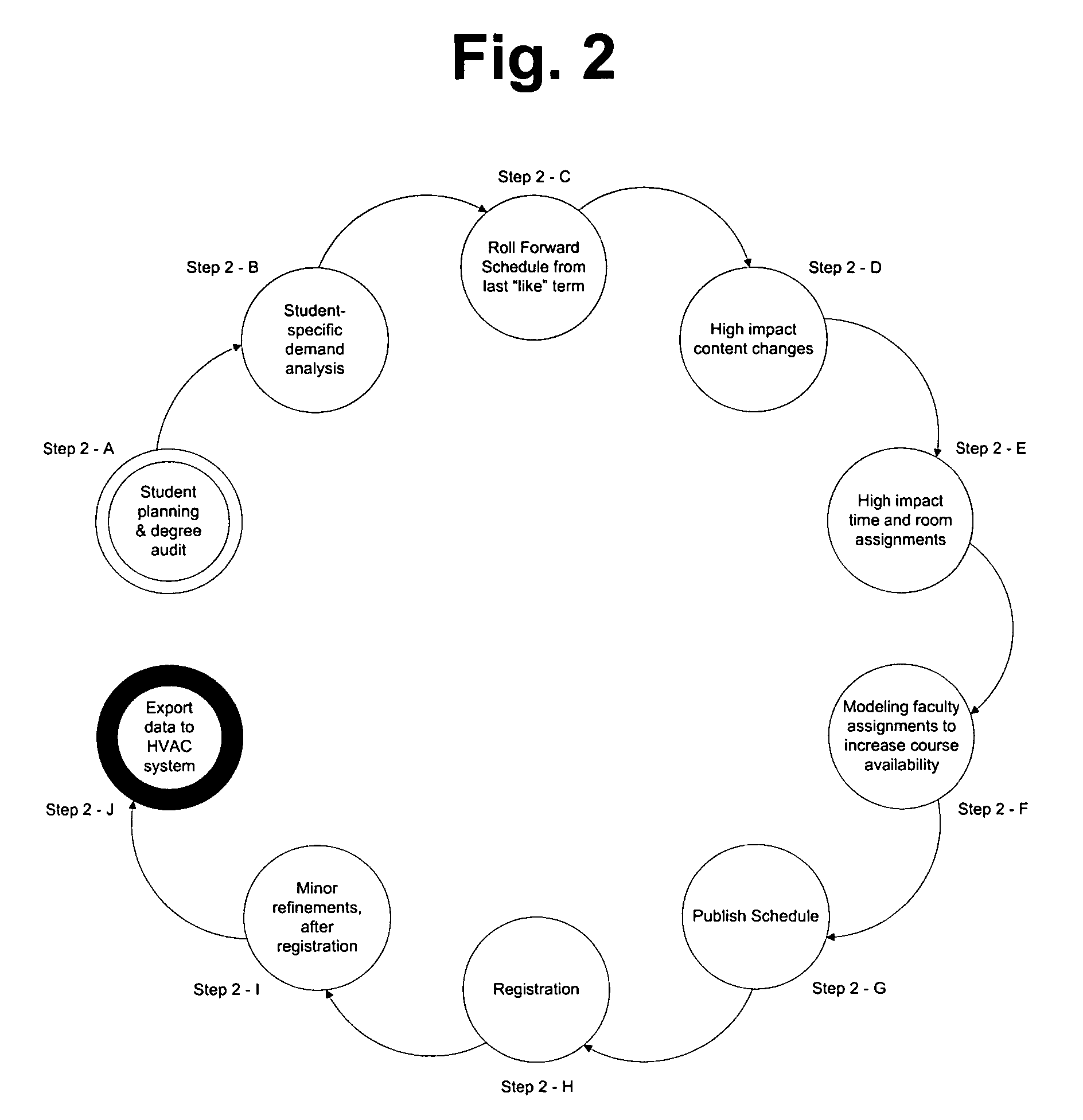Method of student course and space scheduling
a student course and space scheduling technology, applied in the field of student course and space scheduling, to achieve the effect of good understanding of parking load factors
- Summary
- Abstract
- Description
- Claims
- Application Information
AI Technical Summary
Benefits of technology
Problems solved by technology
Method used
Image
Examples
Embodiment Construction
[0122]The following terms and concepts are important in order to understand the key issues in higher education schedule development covered in the invention.[0123]Constraint Analysis—The process through which a college or university identifies bottlenecks in the assignment of timeslots and rooms before running a constraint-based scheduling algorithm.[0124]Course Section—An individual offering of a course that must be assigned an instructor, meeting time, and room.[0125]Degree Audit—The analysis of degree progress of existing students in their declared program of study and, correspondingly, their course needs in future terms to satisfy degree requirements.[0126]Demand Analysis—The process through which a college or university interprets the course needs of their current student population.[0127]Demand Driven Approach—The less common approach to scheduling in North America wherein a Timetable is developed down to the course (not Course Section) level and students register for courses,...
PUM
 Login to View More
Login to View More Abstract
Description
Claims
Application Information
 Login to View More
Login to View More - R&D
- Intellectual Property
- Life Sciences
- Materials
- Tech Scout
- Unparalleled Data Quality
- Higher Quality Content
- 60% Fewer Hallucinations
Browse by: Latest US Patents, China's latest patents, Technical Efficacy Thesaurus, Application Domain, Technology Topic, Popular Technical Reports.
© 2025 PatSnap. All rights reserved.Legal|Privacy policy|Modern Slavery Act Transparency Statement|Sitemap|About US| Contact US: help@patsnap.com



